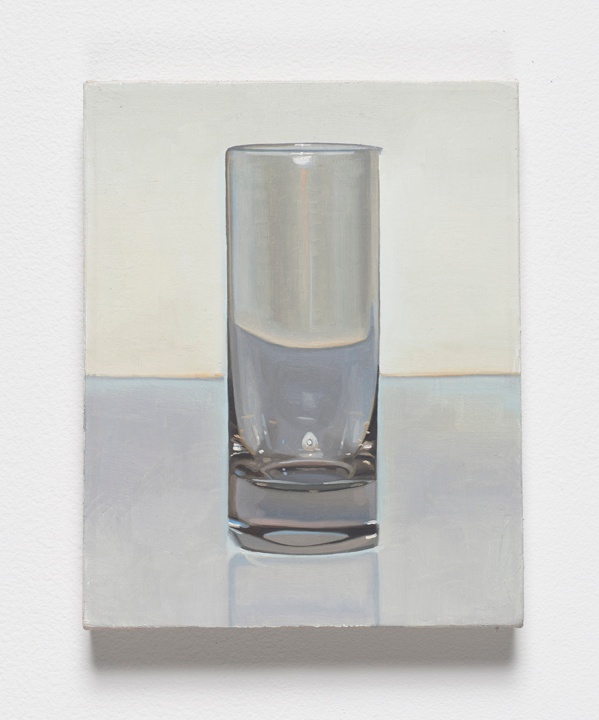Peter Dreher

That an empty glass on a table might prove a compelling subject for over forty years and more than five thousand paintings of modest scale is perhaps surprising. To Dreher, however, returning time and again to the same glass in the same corner of his studio every day and every night, the series became a study in sameness and difference. From 1974 until his death, Tag um Tag guter Tag (variously translated as Day by Day Good Day and Every Day Is a Good Day after the Buddhist proverb) is an accumulation of small revelations: the glass seen again and anew, “as if I were seeing it for the first time.” In the artist’s dedication to repetition, critic Emily Hall wrote, the collected pictures become “an aggregate of still paintings and temporal movement, like a decades-long filmstrip that follows no logic and evinces no progression.” The discrete paintings are coloured by subtle shifts in tone; the studio window reflected in the glass marking the time of day; at night, a light fixture. “The confinement to a single motif,” Dreher said of his many glasses –
opens up the opportunity to concentrate fully on the painting process and its infinite possibilities. Adherence to the same subject is not a limitation or restriction, but rather a liberation from the compulsion to reinvent myself.
b.1932, Mannheim; d.2020, Wittnau
In painting, Peter Dreher found a solitary peace, “a way of being left alone.” Standing outside the times, unconcerned with post-war politics and art’s apparent progress, Dreher withdrew to his studio to follow more indeterminate pursuits. “It’s the only place and the only hours in my life when I really feel quiet,” the artist told critic Lynne Tillman in a 1997 interview, evoking his childhood in wartime Germany. “Maybe I don’t make the impression of being unquiet, but I am.” Repetition and perception’s subtleties offered themselves as form and theme; Dreher given to composing series of near-identical paintings, which more often took as motif single, ordinary objects. Such seriality allowed the artist to underline the act of his seeing. The choice of object, he believed, was of little consequence. Like a word spoken into incomprehension, “an individual painting loses its relationship with reality as soon as it is repeated. It’s just a painting –” (the word just a sound). For Dreher, iteration became meditation, a way of stripping painting down to its barest parts, delineating its process in pigment and time spent – the subject forgotten, seen only in fragments.
The painter simply sets down islands of colour next to each other, intent on reconciling the islands or letting them contrast with one another. He doesn’t think about producing the illusion of a glass, and is astonished, when at the end, the illusion of the glass is there in the painting.
This from Dreher, deferring to the distance of the third-person form.